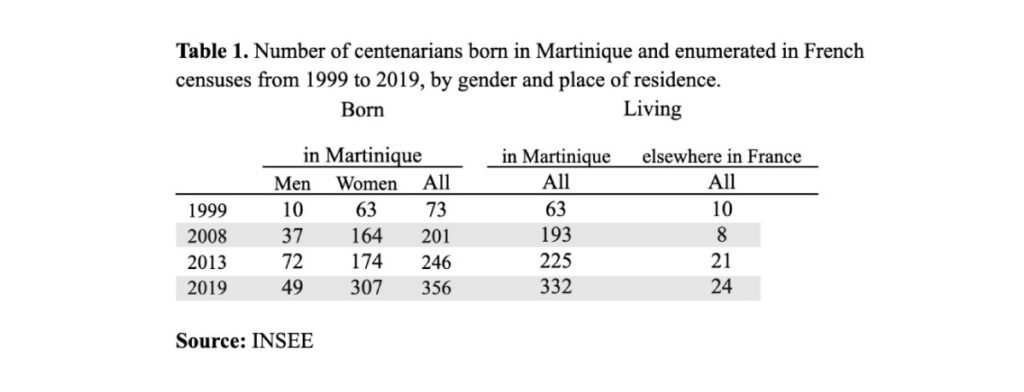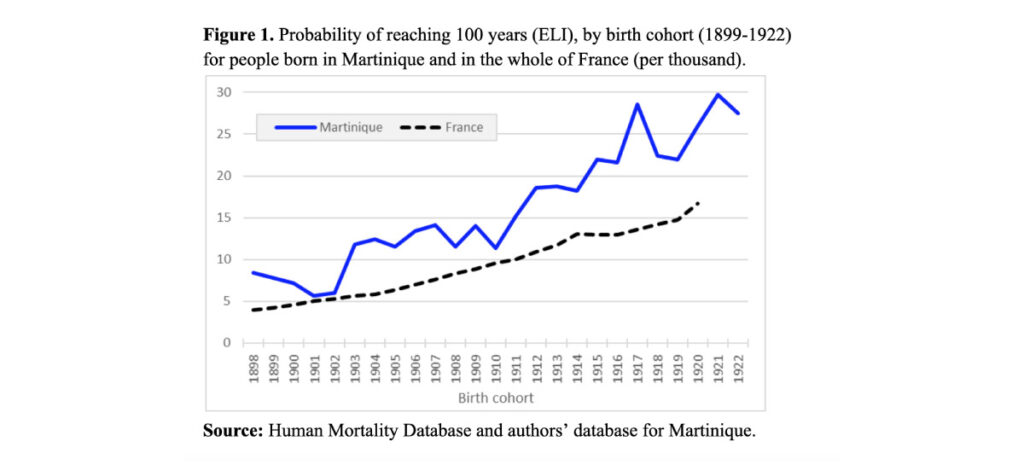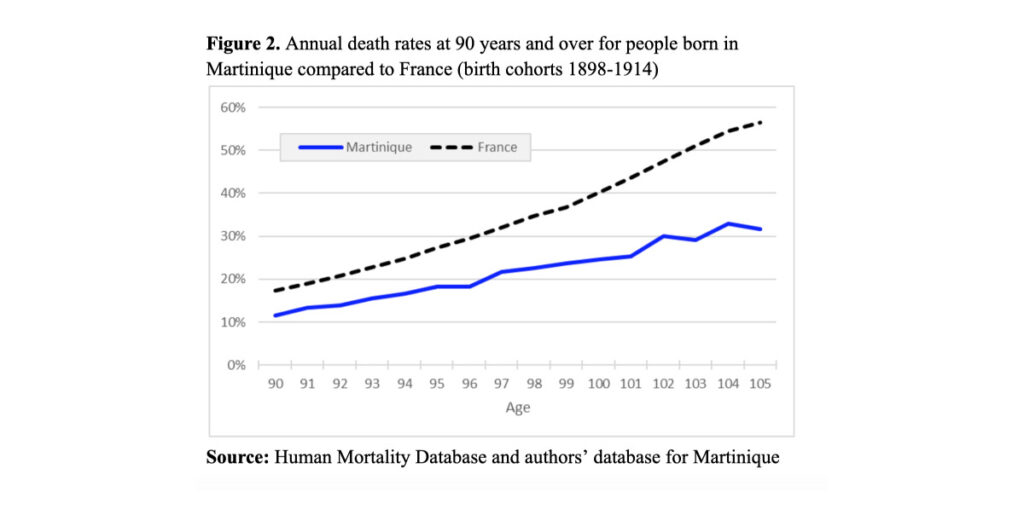Longevity Blue Zones are regions of the world where the population has exceptional longevity. Until recently, four of them had been identified: the Nicoya peninsula in Costa Rica, and three islands: Okinawa (Japan), Sardinia (Italy), and Ikaria (Greece). Martinique (France) now joins the group. Michel Poulain and Anne Herm tell us more about it.
Martinique is one of the overseas departments and regions of France (DROM), known for its bananas, its rum and its heavenly beaches. Its population of about 350,000 inhabitants exudes joie de vivre, even though it has the highest average age of all French regions. While this is largely due to low fertility and significant emigration of young people to metropolitan France, it may also have to do with their longevity (Vallin 2020, 2021).
How to ascertain the longevity of Martinique
To determine the level of longevity in Martinique, careful data collection was performed during the years 2020-2022 to ascertain how many people, among the birth cohorts of 1898-1920, lived past the age of one hundred years. Of these, some were already dead at the time of data collection (2022), but these are the “easy cases”, since all deaths are registered in France, including Martinique, and, since the end of 2019, they have been available in an open-access database with data going back to 1898 (http://www.data.gouv.fr).
Unlike deaths, the centenarians who were still alive in 2022 and the number of births by municipality in the years 1898 to 1922 are more difficult to count or to estimate. A precious source is the census, which counts the number of centenarians born in Martinique, regardless of their (changing) place of residence in France (Table 1).

Probability of reaching 100 years
The extreme longevity index (ELI), the probability of reaching 100 years of age within a birth cohort, is one of the most widely used indicators of longevity. We calculated it for Martinique (dividing the number of centenarians born there, both alive and dead at the time of observation, by the total number of births of that cohort) and we compared it with the ELI for the whole of France (Figure 1).
The survival advantage of people born in Martinique over the French population as a whole is large and appears to increase over time: for instance, in the 1920 birth cohort, there were 24.5 centenarians per thousand births in Martinique versus 16.7 in France as a whole.

Mortality rates at age 90 years and above
Total and age-specific mortality rates for the birth cohorts of 1898 to 1914 (practically extinct by 2022) can be calculated for Martinique and France with the extinct generation method (Vincent 1951). Figure 2 offers an example of what can be derived from it, and confirms the pattern shown in Figure 1: remarkably lower mortality rates among those born in Martinique and an advantage that increases with age. By age 100 years and over, the mortality of Martinicans is about half that of the French population as a whole.

Conclusion
In the search for areas of very high survival, data quality is essential. In this case, as in others (Poulain, Herm and Pes 2013), all the data were accurately verified, without detecting errors, such as omissions or age exaggeration. And they testify to the exceptional survival of the population of Martinique in general, and not just a few privileged individuals. Martinique displays a longevity comparable to that of the Nicoya peninsula (Costa Rica) and of the islands of Okinawa (Japan), Sardinia (Italy), and Ikaria (Greece): the so-called Longevity Blue Zones thus increase from four to five. More information on these zones and the research project that investigates them can be found on the recently launched website longevitybluezone.com.
References
Poulain, M., Herm, A. & Pes, G.M. (2013). The blue zones : Areas of exceptional longevity around the world. Vienna Yearbook of Population Research, 11
Vallin, J. (2020). Why are supercentenarians so frequently found in French Overseas Departments? The cases of Guadeloupe and Martinique. Genus, 76, Article number: 26.
Vallin J. (2021). Eight times more supercentenarians in the French West Indies than in metropolitan France. Gérontologie et société, 43166.3, September 2021, 143-165.
Vincent P. (1951). La mortalité des vieillards, Population 6:182-204. doi: http://dx.doi.org/10.2307/1524149


